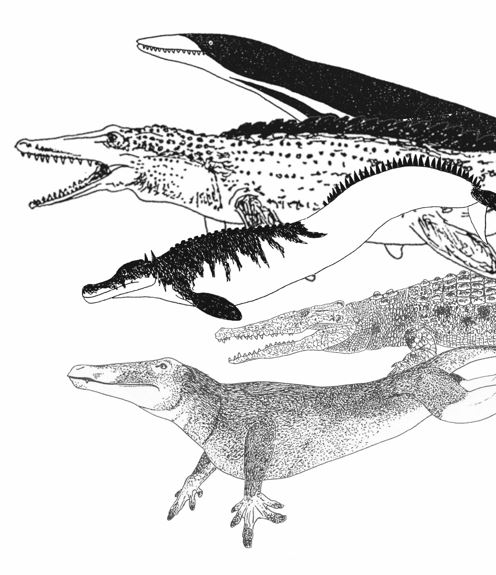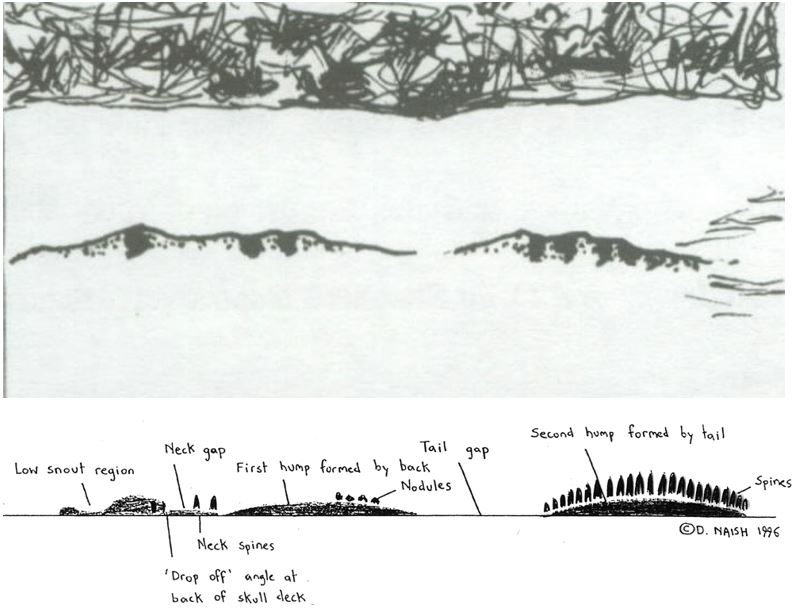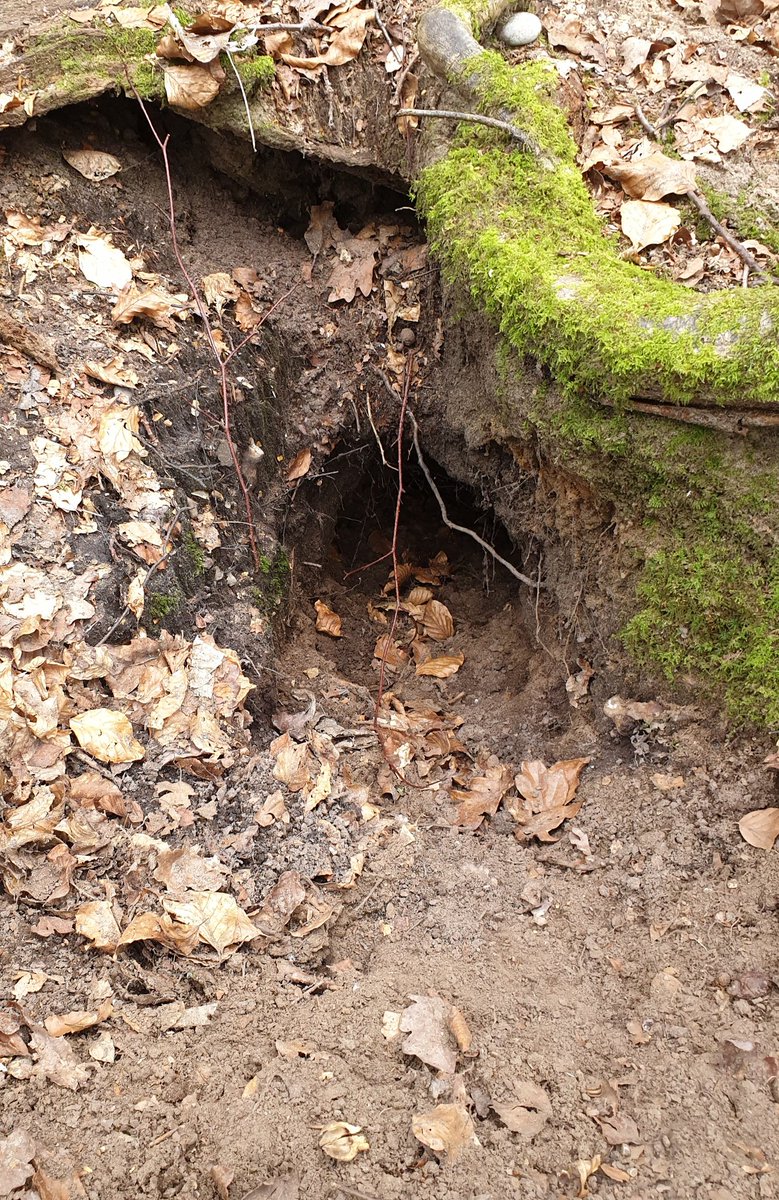
You might be wondering why I haven’t produced a #TetZoocryptomegathread for a while. There's a reason for this: I’m working on a grand and vast megathread project, to be revealed in time. But for now, let’s talk about the #YETI, and about one key sighting in particular… 

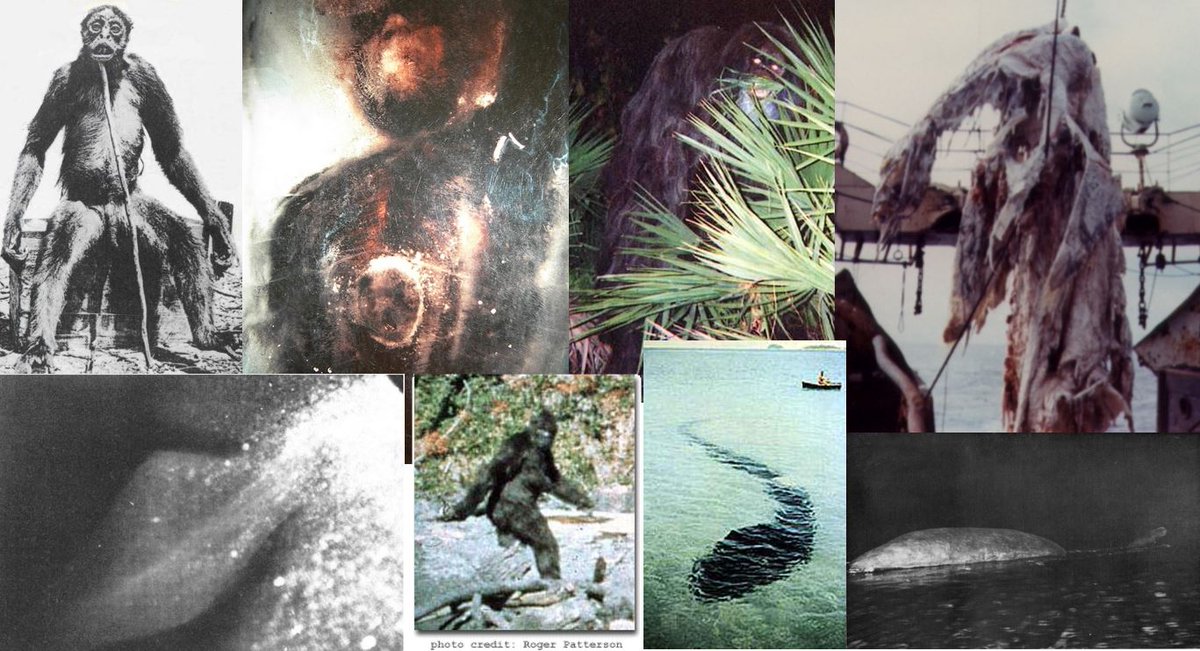

You probably have the impression that the #Yeti is a ‘reasonable’ cryptid: that the case for its existence is backed up by the relatively remote and wild location it’s associated with... #cryptozoology
.... by the anatomically and behaviourally ‘reasonable’ nature of the alleged sightings, and by the quality of those alleged sightings (art @thejohnconway and John Francis/Usborne/Miller 1977)… #yetis #cryptozoology 



One account in particular has been used to support this view of the Yeti. This sighting was reported by Slavomir Rawicz (1915-2004) in a 1956 book (and, before that, in a newspaper article).... 



It supposedly occurred in May 1942 when Rawicz and associates were crossing the Himalayas…
The Rawicz sighting provides a detailed description of two #Yetis, watched for 2 hours from about 100m. Rawicz and his friends were in the Chumbi or Dromo Valley (see the map), a forested, southern Himalayan valley in Tibet, when they saw two figures moving across a snowfield… 

From the vantage point of a mountain ledge, they realised that the figures were two huge creatures, both of which looked back at them with indifference and without fear. The creatures moved slightly, apparently content to stare back at the people without moving away…
Both animals were nearly 2.5m tall, one a little shorter than the other. This variation was implied to represent sexual variation, since Rawicz thought that one was male and the other female...
Here’s the famous 1977 illustration, produced by Wladimir Tschernezky as a reconstruction of what Rawicz described (the sketch is often used as if it drawn by Rawicz directly after the event, but that’s not so)… #Yeti #Yetis #cryptozoology 

Incidentally, this illustration (and Rawicz’s account in general) was taken seriously enough by Russian researcher Michael Trachtengerts to justify the naming of a new species: he proposed the name Homo pardigitatus for the #Yeti...
... using Tschernezky’s depiction of Rawicz’s account as the holotype. I’m afraid this is not a scientifically defensible piece of work, to put it kindly. Anyway… 
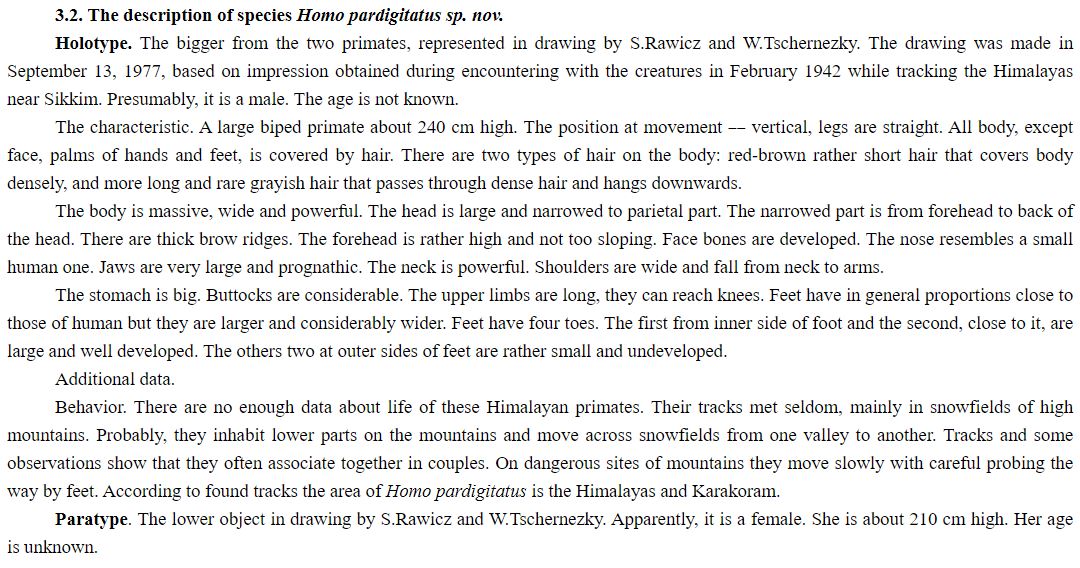
Rawicz described their heads as ‘squarish’, their ears pressed close to the skull, their arms long (their wrists reached their knees) and their chests massive...
They were ‘rusty brown’, with reddish fur closely formed to the body’s shape, and “long, loose, straight hairs, hanging downwards, which had a slight greyish tinge”…
Eventually, Rawicz and his team made the decision to stop watching and leave, and even as they did so the two #Yeti remained standing in view. That’s a surprisingly long sighting of an unknown animal…
After pondering whether the animals could be bears or even orangutans, the observers concluded that they were surely something unique and could not be either…
This view of the #Yeti is consistent with the mainstream cryptozoological interpretation of the Yeti as a giant, robustly built, shaggy-coated hominid of cold, mountainous places...
The sighting is especially significant because it’s one of only a handful of eyewitness accounts to describe a creature of this form (art by the legendary Gino D'Achille)… #yeti #cryptozoology #yetis 



…. most of our thinking on what the #Yeti is like comes from footprints and from indigenous lore, not on eyewitness accounts, and said lore actually posits a rather vaguer view of what the Yeti is like (that’s an issue for another time)…
Indeed, the sighting gets centre-stage in most classic discussions of the Yeti. In his classic cryptozoological work of 1958 – On the Track of Unknown Animals – Bernard Heuvelmans discussed the case in depth and regarded it as pivotal... 

... and even today the Rawicz sighting still appears in the #cryptozoology literature as if it’s a ‘good’ sighting that bolsters the creature’s reality...
I was surprised to encounter it, for example, in Richard Freeman’s Adventures in #Cryptozoology, Volume 1, published in 2019. But it’s crucial to know its background, and here we come to the main reason for this thread… 
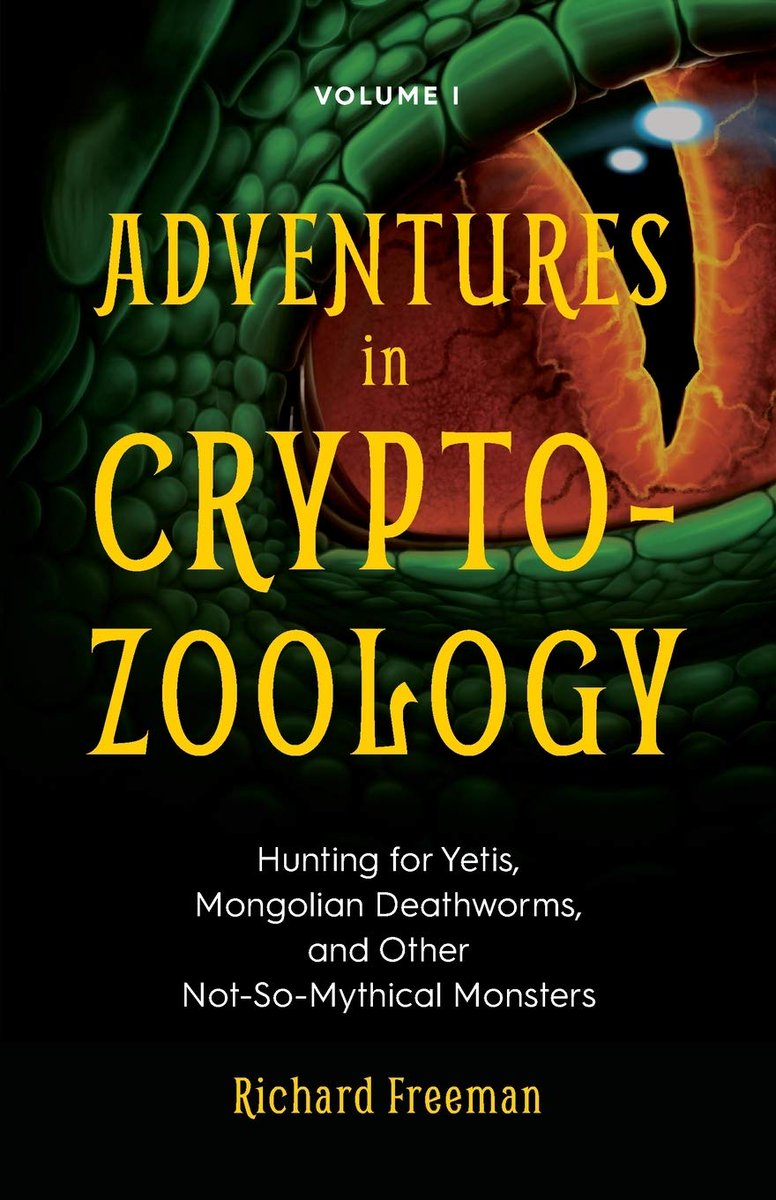
Rawicz wasn’t a Himalayan explorer or mountaineer (the westerners most usually associated with the collection of #Yeti accounts) but a Polish solider who’d been imprisoned in the Siberian prison camp Gulag 303 by the Soviets...
The camp was just 650km south of the Arctic Circle. Rawicz’s reason for imprisonment was that he’d been charged with being a spy…
But in April 1941, he and six companions (three Polish soldiers, a Latvian landowner, a Lithuanian architect and a US engineer called ‘Mr Smith’) managed to escape at the height of a blizzard, and they then set out – on foot – to make the 6500km trek south...
.... from Siberia to Mongolia across Tibet to India (that route shown here, from Hugh Levinson’s 2005 article). Here, the ruling British could be relied on to provide sanctuary and safety… 

Incidentally, a shorter route to safely – involving ‘only’ 2500km of walking – would have involved trekking east to the Pacific coast, but they didn’t do that. Anyway…
Four of the team died on the way, two during the crossing of the Gobi Desert, two in the Himalayas. On finally arriving in India, they met with safety and medical care and later went their separate ways...
Rawicz himself moved to Iraq, re-entered the Soviet Union in June 1942, rejoined the Polish Army, was later transferred to Palestine, and ended up in the UK in 1944. This is where (in 1956) he wrote his book on his adventures, and also where (in 2004) he died, aged 88…
Rawicz didn’t simply decide to write the book for himself, but was inspired to do so after meeting Daily Mail journalist Ronald Downing during the early 1950s...
Downing was the ghost-writer for Rawicz’s 1956 book The Long Walk: The True Story of a Trek to Freedom, and compiled the text following conversations with Rawicz… 

The story told therein has been deemed exciting enough that it formed the basis for the 2010 film The Way Back. Yeah, a very different title. We’ll get to that…
The Long Walk has been a remarkably successful book, selling over 500,000 copies, translated into over 20 languages, and noted as a great personal inspiration to many explorers of later decades....
The problem is that there has long been, and still is, considerable doubt that events happened as Rawicz described…
Walking – without adequate supplies or specialist equipment or animals for support – across literally hundreds of miles of Siberian tundra, across the whole of the Gobi Desert and across the whole of the Tibetan Plateau and Himalayas would be difficult, to put it mildly…
The trek would require Rawicz and his friends to cover over 30km a day (reminder: without adequate supplies or materials), all while they were apparently in poor health due to the conditions at the gulag…
On that note, Rawicz describes in the book how his cell was just a chimney-like structure, built to force him to remain standing; he lived in this one space for six months – yes, SIX months – and with no access to any separate toilet facilities, yuck…
As soon as The Long Walk appeared, scepticism about its veracity was expressed. Not only does it describe a superhuman voyage, completed without evidence and with its main character suffering no long-term ill effects, it also....
... describes routes and distances that never seemed right to those who knew the regions in question…
Famous explorer Eric Shipton was very critical, and explorer Peter Fleming regarded Rawicz’s story as a hoax. A team of Polish ex-servicemen even protested during a talk that Rawicz gave in London in 1956, saying that they knew him during WWII and that his story was not true…
Is there _any_ evidence showing that Rawicz’s story actually happened? Such is the interest in testing it that several detailed investigations have occurred…
In 2006, BBC journalist Hugh Levinson discovered documents kept in Belarus (and discussed as part of a BBC Radio 4 investigation) which demonstrated that Rawicz had indeed rejoined the Polish Army after release from the gulag (part of Levinson’s article is shown here)… 

However, documents found in Poland and Russia showed that Rawicz had been released during a 1942 amnesty for Polish soldiers. Levinson described how this was backed up by a permit and an amnesty document. The documentation also showed....
... that Rawicz went to the gulag for the murdering of a Soviet officer, not for being caught as a spy….
This documentation disproves the ‘escape’ story and basically shows that the narrative of The Long Walk is false. It is not, and cannot be, a true story of Rawicz's adventures…
In a 2010 book called Looking for Mr Smith, researcher and author Linda Willis described her efforts to find the enigmatic US engineer known only to Rawicz as ‘Mr Smith’. She failed to find him, and... 

.... another suspicious part of Rawicz’s story is how little Rawicz knew, or disclosed, about the party members, despite their long and desperate association…
There is thus so much doubt attached to Rawicz’s account that the general opinion is that it never really happened. Or – at least – it never really happened to him…
I mentioned upthread the 2010 movie The Way Back, directed by Peter Weir. Its cast includes Ed Harris, Saoirse Ronan, Colin Farrell and Jim Sturgess… 

This movie started out as an effort to tell the story told in The Long Walk, but – after hearing Levinson’s BBC radio programme – Weir realised that it simply couldn’t be true...
He decided, however, that it might be based on a similar tale (on which read on). The consequence is that the movie has a different title from The Long Walk, and has as its main character a Janusz Wieszczek (played by Sturgess)…
Over the years, a number of other people have come forward, or have been identified, as the inspiration for Rawicz’s story…
The best known of these is Polish man Witold Glinski (who was living in Cornwall, England, as of 2010). Glinski has told journalists on more than one occasion since 2006 a story essentially identical to Rawicz’s (though – with key differences; hold that thought)…
Glinski described how he escaped in February (not April) 1941 (at age 17) and then fled south to India, moving around 12km per day. He had a detailed story explaining why he’d kept this story secret until the 2000s...
It was apparently due to his concern that one of his fellow escapees (a murderer called Bartok) would learn of his identity and location, and Glinski was worried that Rawicz might be one and the same as Bartok…
Both the BBC’s Levinson and American author Willis stated their belief that Glinski was, probably, telling the truth and that this is where Rawicz got the story from. This, in turn, is what encouraged Weir to argue that The Way Back might retain “an essential truth”…
I should add that Glinski’s story has, like Rawicz’s, also been posited as fictional. In a 2011 article published at ExplorersWeb.com, a Pole who supposedly knew Glinski as a young man argued that Glinski was not in Siberia, and was not in a gulag, at the time concerned…
Of the differences between Rawicz’s and Glinski’s stories, one is that Glinski’s is slightly more grounded… and it doesn’t mention #yetis at all! Yes, here’s where we come back to the Yeti segment of Rawicz’s story… 

If Rawicz’s version of events never happened – and I think we can say that they didn’t – what does this mean of his supposed Yeti encounter? It _might_ be argued that Yetis weren't famous or ‘known’ outside of Himalayan lore when Rawicz supposedly encountered them in 1941…
However, he (or his ghost-writer Downing) was writing in 1956, shortly after #Yetis had become famous in the west following the Himalayan adventures of Sir Edmund Hillary, Tenzing Norgay and others (Hillary and Norgay shown here; image Dirk Pons CC BY-SA 3.0)… 

In fact, Rawicz/Downing stated in the book that he had heard recently (as in, as of 1956) of ‘the Abominable Snowman’, and his conclusion was that this was clearly one and the same as the creature he'd seen... #yetis #yeti
A possibly cynical interpretation could be that his inclusion of the #Yeti in the book was inevitable, since #Yetis were new, exciting and newsworthy in the mid-1950s, and universally associated with the Himalayas…
If, then, Rawicz came up with the story after hearing about similar events from Glinski (or one of the other people with similarly remarkable gulag escape stories), it might be that be added the #Yeti segment simply to spice things up a bit…
But, whatever, the bottom line is that the famous 1942 Slavomir Rawicz Yeti encounter story is almost definitely fictional and shouldn’t be quoted or relied upon as a ‘good’ account that might back up #Yeti authenticity...
It is, on the contrary, so problematic that it should either be stricken from the record, or – at best – mentioned with an obvious, strong disclaimer…
And that brings us to end of this #TetZoocryptomegathread. Check the # for a bunch of others and stay tuned for more of this sort of thing… like I said at the start, a GIANT megathread project is planned, though won’t be released for a while because everything takes forever… 

This thread was compiled following consultation of several books (including Heuvelmans’s On the Track of Unknown Animals and Freeman’s Adventures in Cryptozoology Vol 1) in addition to articles by Hugh Levinson and ExplorersWeb.com....
A summarised version of this story is included in my 2017 book #HuntingMonsters. If you like what I do and want to support it and SEE ME DO MORE please consider supporting me at: patreon.com/TetZoo 



UPDATE: thanks to a tip-off from @Blackmudpuppy, I checked, and the Tschernezky illustration was indeed published in Welfare & Fairley's 1980 Arthur C. Clarke's Mysterious World... #yeti #yetis 



• • •
Missing some Tweet in this thread? You can try to
force a refresh









